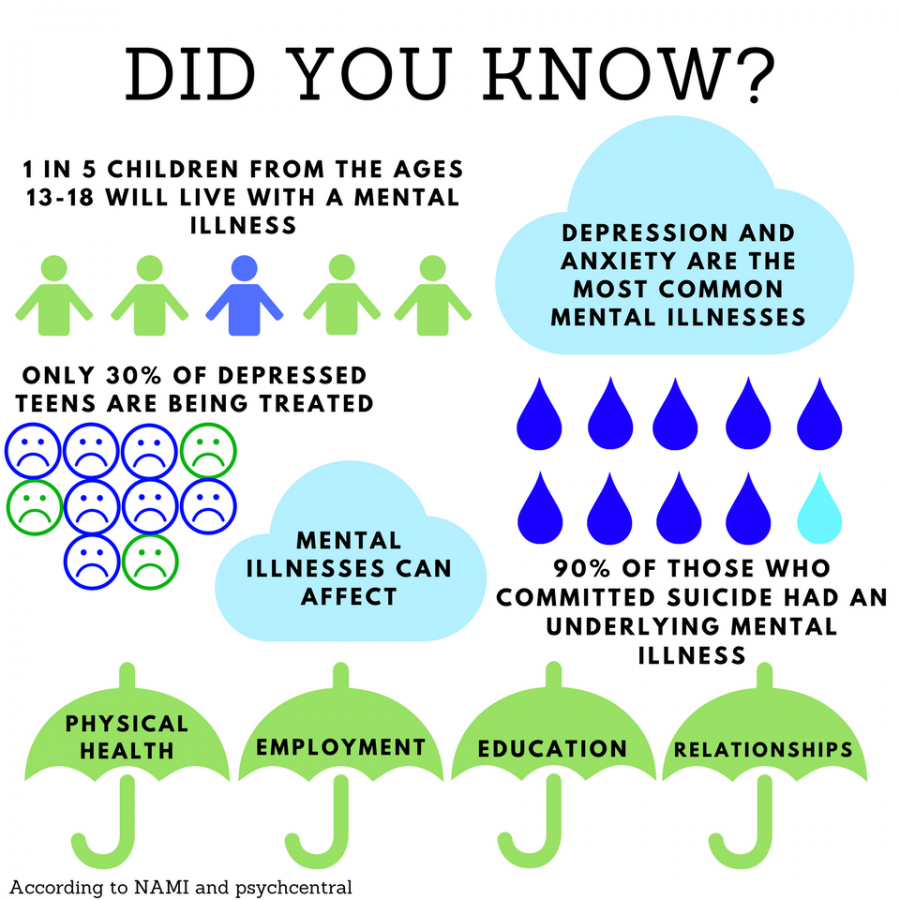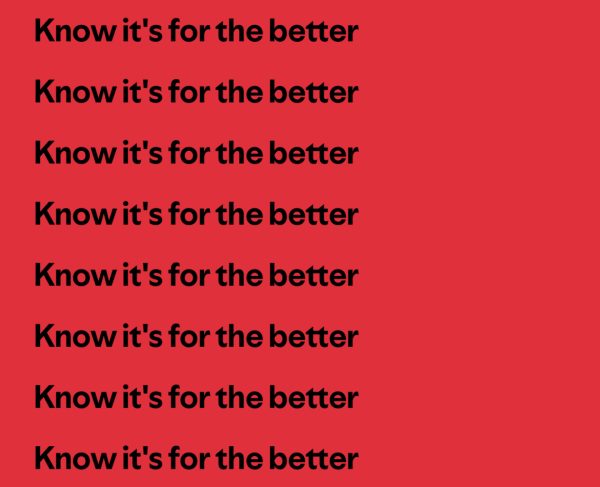Mental illnesses present challenges for teens
GUSD adopts new policy to help mentally ill students
“My friend had depression and she would always push me away,” said one Clark junior, who wishes to remain anonymous. “I noticed she was not acting herself. She was not interested in the things she used to enjoy and she started to talk less. I told her parents and helped her get the help she needed. I’m glad I told somebody.”
Although mental illnesses occur in the brain, it does not mean that the illnesses are not real. Some do not take these mental conditions seriously because they can’t physically see the condition. Yet, one in five children from the ages 13 to 18 will live with a mental illness. 20 percent of teenagers will suffer from some kind of mental illness, the most common being depression and anxiety.
Having a mental illness is not a choice. Researchers are only starting to understand that these types of illnesses develop for complex reasons. Certain genes a person has may increase the risk of them developing a mental illness. In addition, a person’s life situation can also trigger a mental illness. It really depends on a person’s genes and what they have been through. “Mental illness is both hereditary and environmental,” said Karen Carlson, coordinator of the Glendale Unified School District’s mental health services. “The brain and nervous system you are born with can be prone to mental illness like some people are prone to cancer. But environmental issues like trauma and abuse can also cause mental illness.”
Mental illnesses can affect a person’s physical health, education, employment and relationships. If the disorder gets worse, it can affect a person’s everyday life. Once it starts to affect one’s daily life, they should seek help. A person going through an illness may feel as if they are physically sick. They might distance themselves from the people that they are close with. One might even miss days of school or be unable to attend work. A person’s feelings and emotions are impacted greatly. The people around them, including their friends and family, are also affected.
When a person is suffering one of these illnesses, they are not themselves. It can cause them to take action and do something they will later regret. Suicide is the third leading cause of death in youth ages 15 to 24. Nami.org says that 90 percent of those who died from committing suicide had an underlying mental illness.
According to the Los Angeles Times, the Glendale Unified school board adopted a 2017-18 Suicide Prevention Policy back in August. The Times said that the Assembly Bill 2246 ordered a requirement for school districts to adopt a policy on suicide prevention for seventh to twelfth graders. This policy included a training video that was created by the school district’s mental-health services team and a booklet about suicide prevention. In addition, the LA Times article states that the secondary teachers took part in mandatory training about suicide awareness.
“About six years ago, they hired me to be the mental health coordinator for the school district,” Carlson said. “There were 60 kids who needed counseling and I gave them a therapist once a week. Now there are 240 kids and families who get counseling services every week. There are 21 therapists providing services each week. When things are more serious we put the student in a smaller more psychologically supportive environment for their school life. When I started we had two of those kinds of schools; now we have four. When I started we did not have these special emotionally supportive schools for younger kids, now we do.”
Depression and anxiety are among the most common mental illnesses that teenagers will go through. Schizophrenia is an illness that can occur in a teen’s later years. “Depression can make a young person lose their interest in pleasurable things. They have no vitality, and feel sad and hopeless,” Carlson said. According to psychcentral.com, about 20 percent of teenagers will experience depression before they reach adulthood, and only 30 percent of the depressed teens are being treated for it. Depression can be triggered by other mental illnesses but it can also bring about certain illnesses as well.
“With anxiety there is a constant feeling of stress and pressure, worry about the future and a general fear that stuff will go wrong,” Carlson said. “In the late teen years is when schizophrenia can begin. A teen may start hearing voices that are not there.”
Research has shown that over the years, teenagers are experiencing more anxiety. “I suffered from anxiety and it was frustrating because no one around me knew what was going on. I wish more people were educated on it. You won’t be able to understand unless you’ve been through it yourself,” said one Clark sophomore who wishes to remain anonymous.
The Anxiety and Depression Association of America stated that nearly one-half of those diagnosed with depression are also diagnosed with an anxiety disorder. Schizophrenia symptoms such as hallucinations can start to develop between the ages of 16 to 25.
There are a few things a person can do if they or someone they know thinks they are suffering a mental illness. It is important to remember that these illnesses are treatable. “If a teen thinks they may have a mental illness they should start with their medical doctor because some physical illnesses like thyroid, lead poisoning and heart disease can mimic mental illness,” Carlson said. “Once the physical illness is ruled out the teen should look for a good therapist. It’s hard to shop for a therapist when the teen doesn’t feel well. But don’t settle. Get someone you can talk to. Most mental illness can be treated with a combo of meds and talk therapy.”














